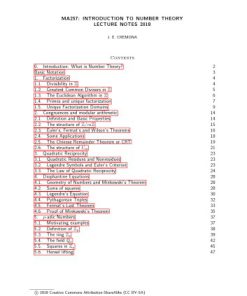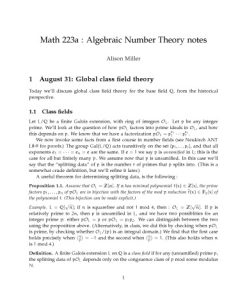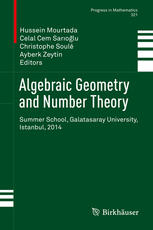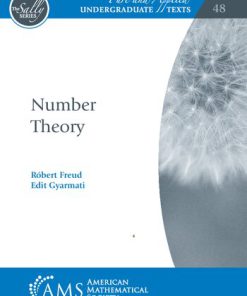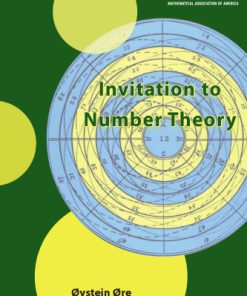A Gateway to Number Theory Applying the Power of Algebraic Curves 1st Edition by Keith Kendig 1470456222 9781470456221
$50.00 Original price was: $50.00.$25.00Current price is: $25.00.
A Gateway to Number Theory Applying the Power of Algebraic Curves 1st Edition by Keith Kendig – Ebook PDF Instant Download/Delivery:1470456222,9781470456221
Full download A Gateway to Number Theory Applying the Power of Algebraic Curves 1st Edition after payment
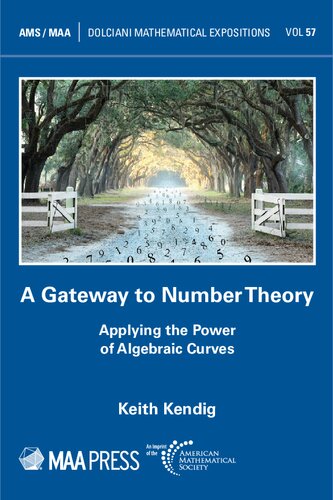
Product details:
ISBN 10:1470456222
ISBN 13:9781470456221
Author:Keith Kendig
Challenge: Can you find all the integers a, b, c satisfying 2a2+3b2=5c2? Looks simple, and there are in fact a number of easy solutions. But most of them turn out to be anything but obvious! There are infinitely many possibilities, and as any computer will tell you, each of a, b, c will usually be large. So the challenge remains …nnFind all integers a, b, c satisfying 2a2+3b2=5c2.nnA major advance in number theory means this book can give an easy answer to this and countless similar questions. The idea behind the approach is transforming a degree-two equation in integer variables a, b, c into a plane curve defined by a polynomial. Working with the curve makes obtaining solutions far easier, and the geometric solutions then get translated back into integers. This method morphs hard problems into routine ones and typically requires no more than high school math. (The complete solution to 2a2+3b2=5c2 is included in the book.)nnIn addition to equations of degree two, the book addresses degree-three equations―a branch of number theory that is today something of a cottage industry, and these problems translate into “elliptic curves”. This important part of the book includes many pictures along with the exposition, making the material meaningful and easy to grasp.nnThis book will fit nicely into an introductory course on number theory. In addition, the many solved examples, illustrations, and exercises make self-studying the book an option for students, thus becoming a natural candidate for a capstone course.
A Gateway to Number Theory Applying the Power of Algebraic Curves 1st Table of contents:
Chapter 1. A Marriage for the Ages
1.1. Mathematics and the Hawaiian Islands
1.2. A Model
1.3. Appearance of the Rational Unit Circle, Part I
1.4. Appearance of the Rational Unit Circle, Part II
1.5. What About Other Rational Circles?
1.6. A Parametric Formula for the Unit Circle in ℚ²
1.7. More General Quadratic Problems
1.8. Conics
1.9. Our Method Also Works in Reverse
1.10. Surveying All Solutions
1.11. The Discriminant
1.12. Finding a Rational Point
1.13. What About Degree 1?
Chapter 2. Viewing the Whole Algebraic Curve
2.1. An Ancient Indian Parable
2.2. Viewing Algebraic Curves
2.3. Doing Math at Infinity!
2.4. A More Symmetric Model of ℙ²(ℝ)
Chapter 3. Entering the World of Elliptic Curves
3.1. Curves of Degree 3
3.2. What Is an Elliptic Curve?
3.3. Why Irreducible?
3.4. Smoothness
3.5. Weierstrass Forms for Elliptic Curves
3.6. The Discriminant Again
3.7. Our Method Still Works
3.8. Examples of Connecting the Dots
3.9. Mordell’s Theorem
Chapter 4. Every Elliptic Curve Is a Group!
4.1. Finite Groups Within an Elliptic Curve
4.2. Finitely Generated Abelian Groups
4.3. Rank
4.4. Mazur’s Theorem
4.5. A Gallery of Positive Rank Elliptic Curves
4.6. How Many Curves?
4.7. Finding Generators
Chapter 5. A Million-Dollar Challenge
5.1. Breaking Up a Task into Many Smaller Ones
5.2. The Birch and Swinnerton-Dyer Conjecture
5.3. The Notion of Expected Rank
5.4. Expected Rank of a Random Elliptic Curve
5.5. The Tale of Average Rank
5.6. Rank Results Without GRH or BSD
5.7. About Manjul Bhargava
Chapter 6. Every Real Elliptic Curve Lives in a Donut
6.1. Complex Curves
6.2. Complex Numbers Enlighten
6.3. Plotting a Complex Circle
6.4. Plotting a Complex Elliptic Curve
6.5. Subgroups and Cosets
6.6. Elliptic Curves with No Oval
Chapter 7. The Genus
7.1. A Few Preliminaries
7.2. Examples
7.3. The Genus Formula
7.4. The Genus vs. Number Theory
7.5. The Curious Story of Plane vs. Fancy Curves
Chapter 8. In Conclusion . . .
8.1. Degree 1
8.2. Degree 2
8.3. Degree 3
People also search for A Gateway to Number Theory Applying the Power of Algebraic Curves 1st :
introduction to number theory aops pdf
e to the power of a number
what is a number to the power of itself called
number theory applications
convert e to the power to number
Tags:
Keith Kendig,Applying,Theory,Algebraic,Curves
You may also like…
Mathematics
Algebraic Number Theory A Brief Introduction 1st Edition by Chahal 0367761459 9780367761455
Politics & Philosophy - Social Sciences
Mathematics - Number Theory
Politics & Philosophy - Anthropology
Uncategorized
Mathematics - Number Theory
Mathematics





